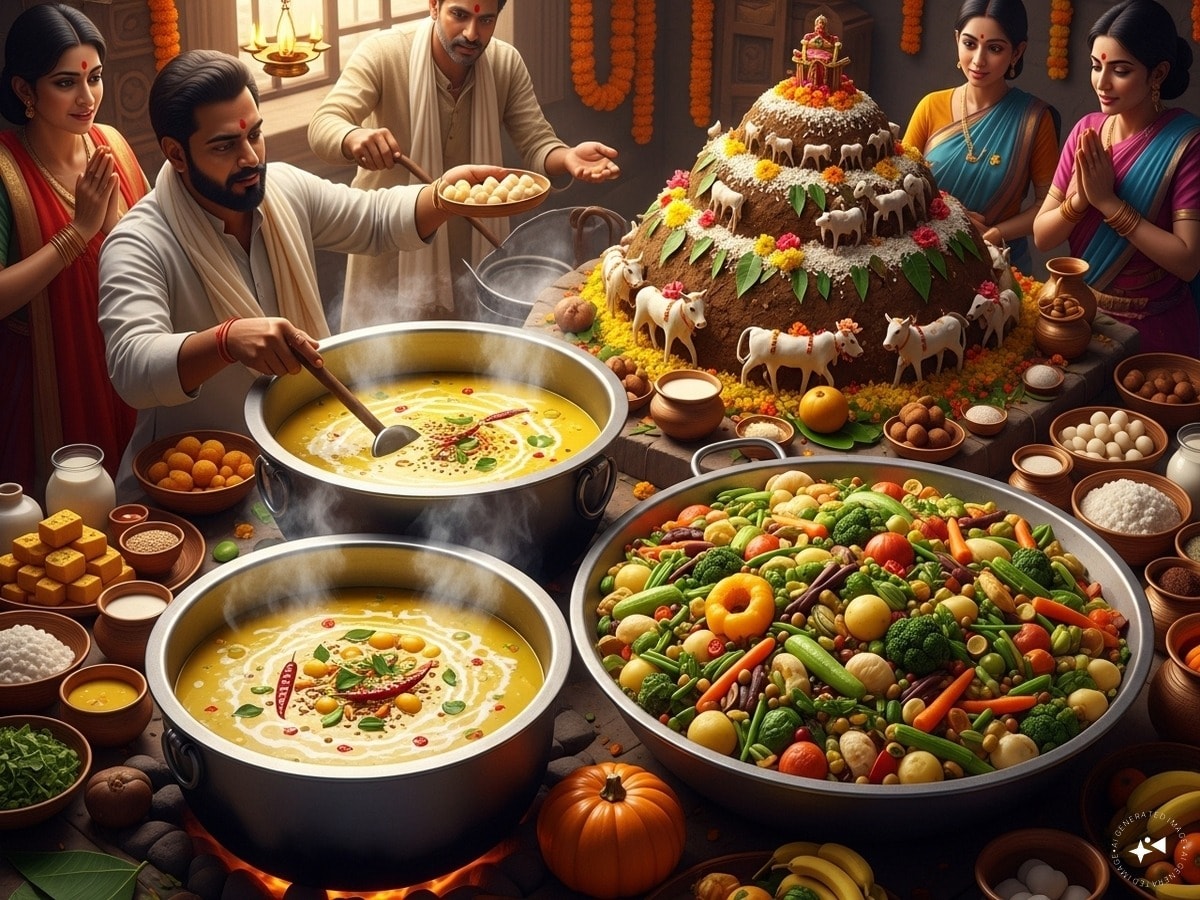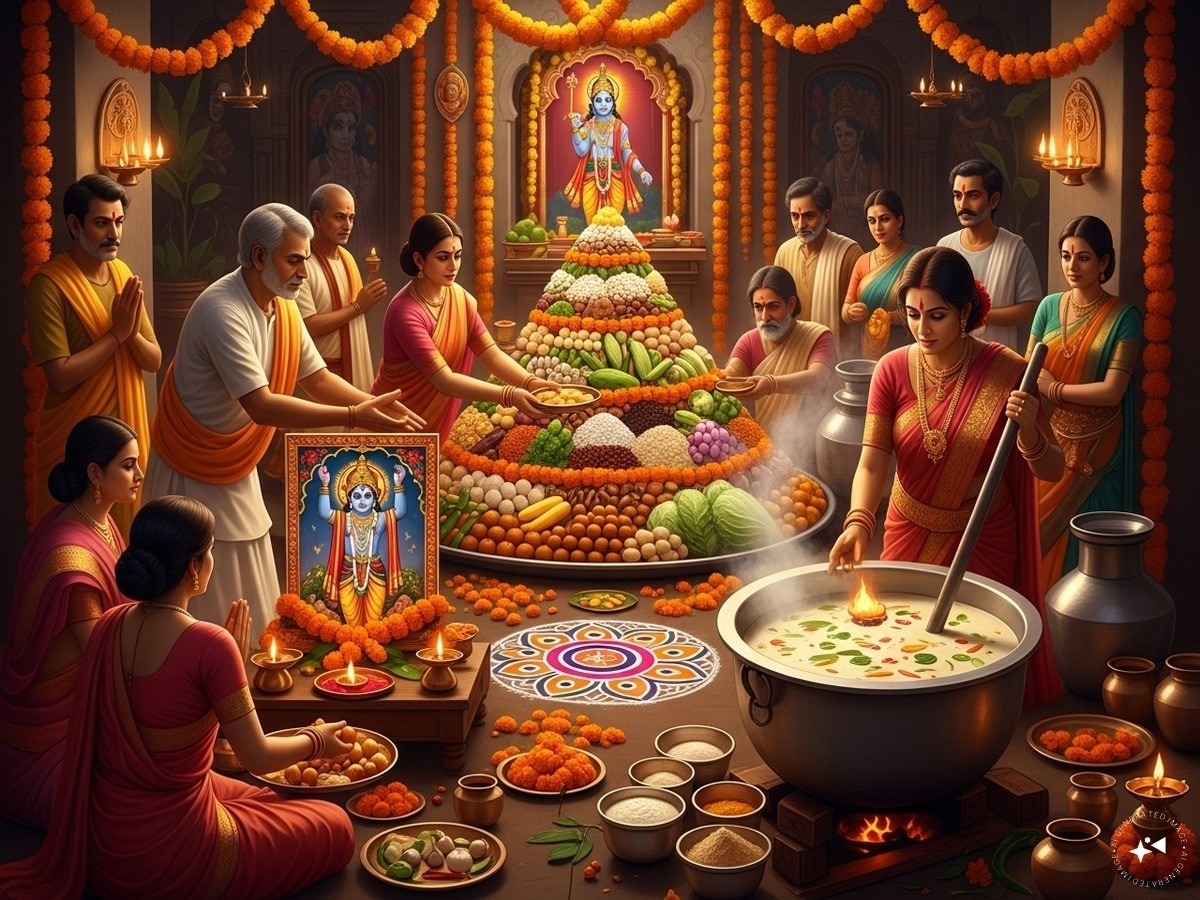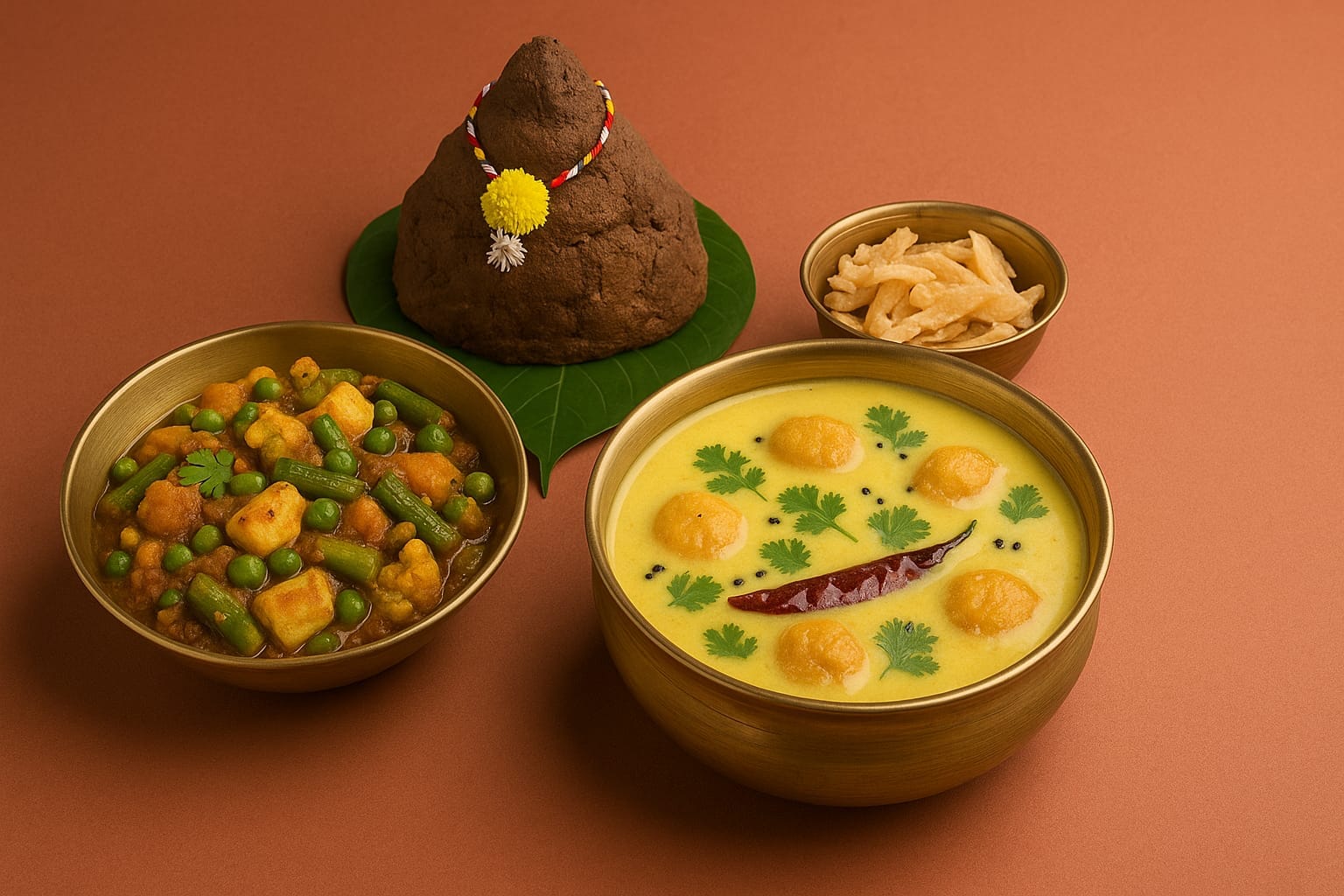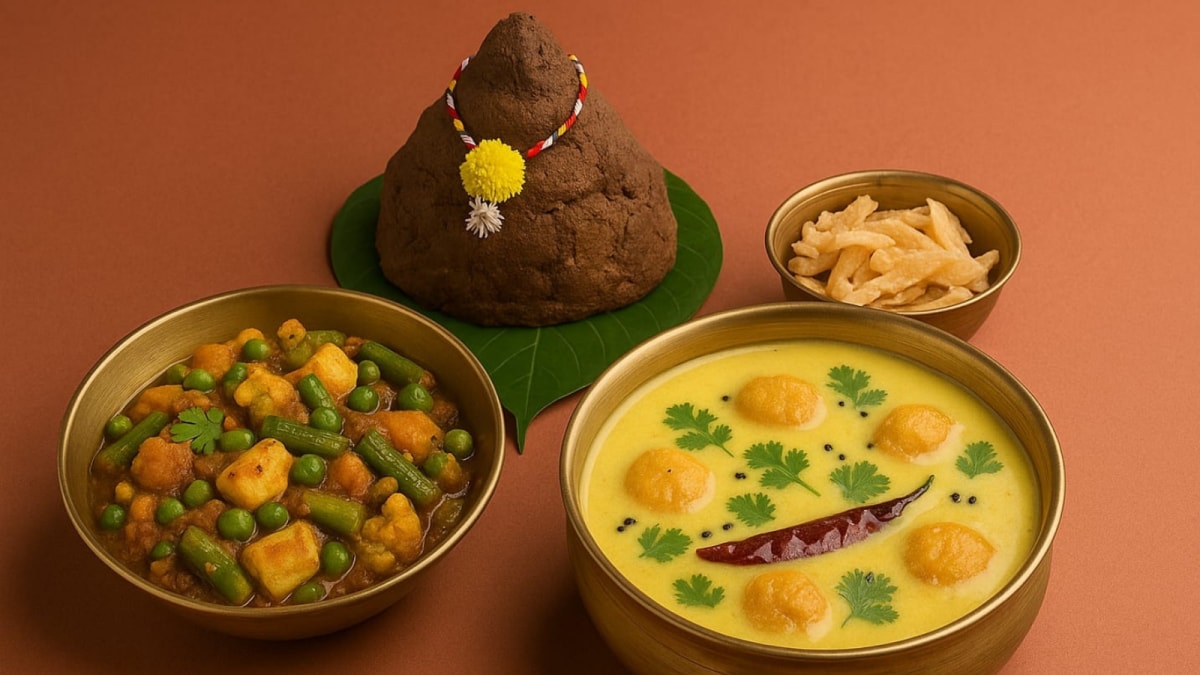Last Updated:
‘Kadhi’ and ‘Annakoot sabzi’ take centre stage during Govardhan Puja, uniting flavour, tradition, and devotion. Discover why they hold such deep significance

Preparing ‘Kadhi’ and ‘Annakut sabzi’ is a key part of Govardhan Puja. (News18)
Govardhan Puja, also known as the Annakut Festival, is celebrated the day after Diwali. This day marks the occasion when Lord Krishna lifted the Govardhan mountain to shield the people and animals of Braj from Lord Indra’s wrath.
On this day, devotees perform special worship of Lord Krishna and offer a variety of dishes in his honour. Among these, Kadhi and Annakoot vegetables hold particular significance, not merely as food, but as carriers of deep spiritual and cultural meaning. Astrologer Anshul Tripathi explains their importance.
What Is Govardhan Puja?
Govardhan Puja is also called the Annakut Festival, which translates to ‘a mountain of food’. It is a symbolic celebration of gratitude towards nature, agriculture, and nourishment.
According to legend, Lord Krishna taught the people of Braj that rather than worshipping Indra, they should revere nature and the Earth, our true providers of sustenance.
On this day, a wide array of grains, pulses, vegetables, and sweets are prepared and offered to the deity. Preparing Kadhi and Annakoot sabzi (vegetables) is a key part of this tradition.
What Are ‘Annakut’ Vegetables?
The word Annakoot refers to a dish made by combining many seasonal vegetables, such as aubergine (brinjal), potatoes, bottle gourd, squash, peas, okra, and local beans. The dish is typically prepared in a simple yet flavourful manner, avoiding onions and garlic, to maintain a sattvic (pure and balanced) quality.
The preparation of Annakoot vegetables symbolises respect for nature’s diversity. Just as each vegetable has its own unique flavour and characteristics, each experience in life holds its own significance.

The dish embodies a message of unity in diversity, showing that true richness and harmony arise when different elements come together.
The Religious And Scientific Importance Of ‘Kadhi’
The tradition of preparing Kadhi on Govardhan Puja is an age-old custom. This dish, made with gram flour (besan) and curd, is believed to represent purity and balance. It is considered sattvic, and thus ideal for consumption following the fasting and rituals of Diwali.
Kadhi is also said to have been a favourite dish of Lord Krishna, which is why it holds such a special place in this celebration. Symbolically, gram flour reflects the Earth’s bounty, while curd represents freshness and vitality. Together, they denote both prosperity and purity.
Why ‘Kadhi’ And ‘Annakut’ Are Prepared Together?
There is deep religious and symbolic meaning behind preparing these two dishes side by side. While Annakoot vegetables celebrate the diversity of nature, Kadhi represents inner balance and simplicity. Together, they remind us of the need to maintain both variety and harmony in life.

In many rural traditions, Govardhan Puja is viewed as a kind of harvest thanksgiving. Before the arrival of new crops, farmers honour and thank the Earth by preparing meals that include a little of everything from the field. It is a gesture of gratitude to Mother Earth.
How ‘Annakut’ Puja Is Performed
On Govardhan Puja, a symbolic representation of Govardhan Hill is created in homes and temples, usually made from cow dung, clay, or flour. Various dishes are then lovingly arranged around it as offerings. Of these, Kadhi and Annakoot sabzi are placed in large platters and presented to Lord Krishna.

In some places, a grand offering known as Chappan Bhog (56 different dishes) is also made.
Regardless of the scale, the most important aspect is that all food must be sattvic, prepared without onion or garlic, as the entire day is devoted to purity, devotion, and gratitude.
October 22, 2025, 11:15 IST
Read More








